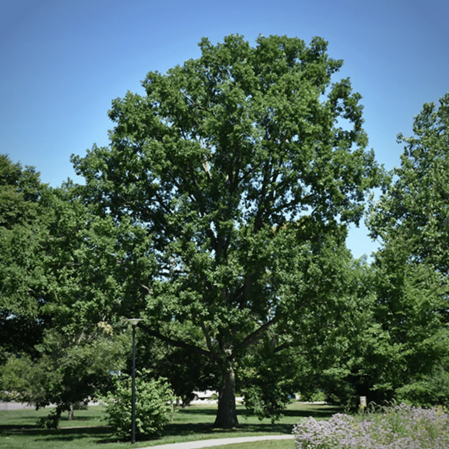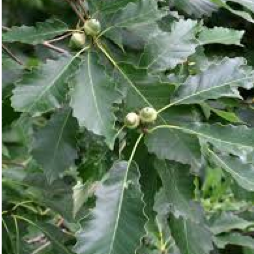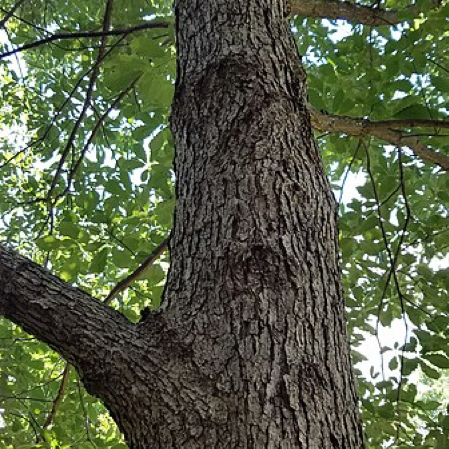
Chinkapin Oak
Quercus muehlenbergii
Family: Fagaceae
Leaf Type: Deciduous
Mature Height: ~15 m (~50 ft)
Fall Color: Bronze, orange-brown
Native Range: Chinkapin oaks are found throughout the Midwest and into the Southeast of the United Staes.

Features
The leaves of the chinkapin oak are very small which helps distinguish them from similar species. The leaves have jagged teeth with a hairy, whitish underleaf. As with all oaks, the fruit of the chinkapin oak is an acorn, but this species of oak has a small acorn, making it a distinguishing feature among other oaks. The bark is gray and flaky. We recommend not sampling the fruits & nuts of the trees and plants here at Adventure Science Center. Like most oak trees, the chinkapin oak is sensitive to fungus, attack from insects like the gypsy moth, and other boring (hole-making) insects.

Fun Facts
● Chinkapin oak’s common name is named because of the resemblance of the leaves to the Allegheny chinquapin tree. The scientific name is named honors Gotthilf Henry Ernest Muhlenberg, 18-19th century Lutheran minister-botanist from Pennsylvania
● Chinkapin oak wood is durable and used for construction and fence lumber.
● The acorns of this tree are sweet and a favorite of human and wildlife foragers. We don’t recommend trying one here!
“If Trees Could Sing” is a project of The Nature Conservancy that highlights several recording artists and demonstrates the importance of trees. Check out what Tim O’Brien has to say about chinkapin oaks.
Learn More

Did you know that trees provide homes for animals, keep us cool and clean our air? Click here to learn more about the benefits that trees provide to us and our world.
The Chinkapin Oak is presented by Amazon.


